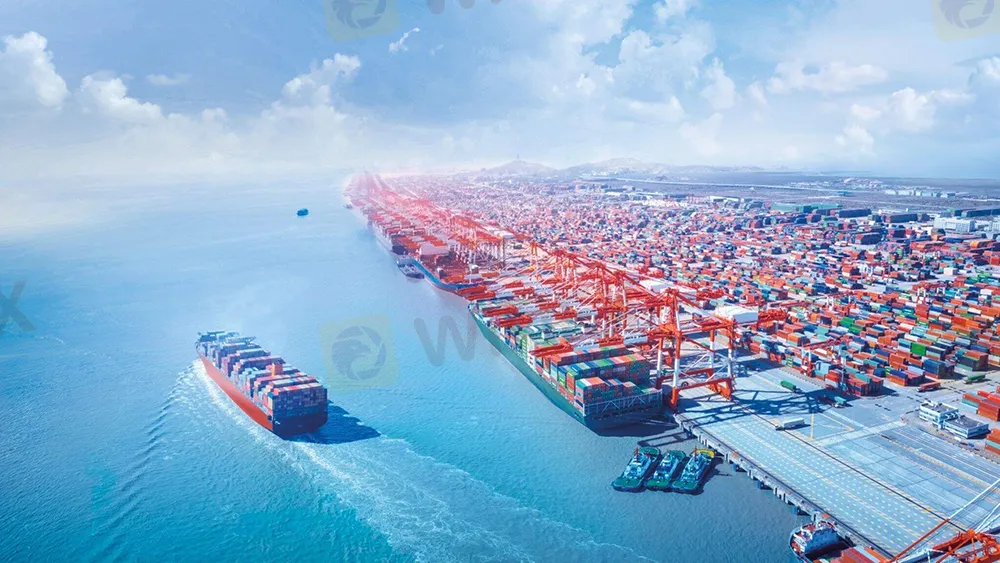简体中文
繁體中文
English
Pусский
日本語
ภาษาไทย
Tiếng Việt
Bahasa Indonesia
Español
हिन्दी
Filippiiniläinen
Français
Deutsch
Português
Türkçe
한국어
العربية
【MACRO Insight】Imbalance in Supply and Demand in the Shipping Market — Abnormal Price Increase in the Second Quarter of 2024!
Zusammenfassung:Despite the numerous challenges facing the current market, proactive measures and forward-looking strategic planning could enable the shipping industry to discover new growth opportunities amidst volatility, providing robust support for global trade facilitation. With gradual market adjustments and concerted efforts from all parties, there is reason to cautiously optimistic about the future of the shipping industry.

In the second quarter of 2024, despite being the traditional off-season, the international shipping market saw an unusual phenomenon of price hikes. This was mainly due to the ongoing crisis in the Red Sea region, causing a sharp increase in global container transportation costs, thereby affecting futures contract prices.
The front-month futures contract for the Shipping Index (Europe route) surged nearly 9% this week, marking a new high since its listing, with a staggering cumulative increase of 337% since the beginning of the year. This futures contract is based on the Shanghai Containerized Freight Index (Europe route), which has risen for 10 consecutive weeks from April 22 to July 1, with an increase of 151%.
In addition to the Europe route, freight rates on the North America route also experienced significant increases. In June, spot freight rates on the Europe route rose by over 30% compared to the previous month. According to data from the Shanghai Shipping Exchange, the freight rate indices for Chinas exports to Europe and the Mediterranean routes in June increased by 34.9% and 23.1% on average, respectively.

Simultaneously, prices on the North America route saw a similar upward trend. Against a backdrop of strong export demand, container charter rates also rose significantly. Clarksons statistics indicate that charter rates for different vessel types rose between 43.5% and 49.2% in June compared to the previous month. Futures analysts believe that supply-side capacity adjustments may not be completed until the end of 2024. Without significant demand contraction, the market may continue to remain bullish with prices prone to rise. Optimism persists regarding freight rates for the second half of the year.
The shipping prices in the second quarter surged unusually during the off-season, with rates on major routes commonly rising by double digits and some routes even skyrocketing by nearly 50%. Factors such as detours, port congestion, and strikes have led to insufficient supply of shipping capacity, empowering shipping companies to sustain price hikes. The latest data from the Shanghai Shipping Exchange reveals that the latest freight rate index for the Europe route has hit a new high, rising by 12.3% from the previous week, marking a cumulative increase of 151% over 10 consecutive weeks.
With the traditional peak season approaching, demand on the Asia-Europe route is expected to further rise in the third quarter, especially with pre-Christmas stocking demands in the Europe-America markets and potential interest rate cuts stimulating commodity import demand. Currently, shipping companies are implementing or planning additional surcharges. For instance, Maersk has announced an increase in peak season surcharges for shipments from East Asia to Northern Europe starting July 9. A challenge faced by shipping companies and businesses is the expected continuation of interruptions in Red Sea container transport into the third quarter, prompting vessels to detour around the Cape of Good Hope, thus extending transit times and driving up freight costs.

In the face of multiple challenges and uncertainties in the current international shipping market, shipping companies and businesses need to adopt flexible strategies to cope with market fluctuations. With the peak season approaching and potential economic policy adjustments, the shipping industry may see new opportunities for growth. However, geopolitical tensions and risks of transportation interruptions persist, necessitating vigilance among industry participants to closely monitor market dynamics and seek innovative solutions to optimize operational efficiency and cost control.
Against this backdrop, shipping companies may need to enhance communication with clients, proactively plan transport routes and schedules to mitigate the impact of uncertainties. Additionally, strengthening collaboration with governments and international organizations to collectively address geopolitical risks is crucial for ensuring the stable development of the shipping industry.
Despite the numerous challenges facing the current market, proactive measures and forward-looking strategic planning could enable the shipping industry to discover new growth opportunities amidst volatility, providing robust support for global trade facilitation. With gradual market adjustments and concerted efforts from all parties, there is reason to cautiously optimistic about the future of the shipping industry.
Haftungsausschluss:
Die Ansichten in diesem Artikel stellen nur die persönlichen Ansichten des Autors dar und stellen keine Anlageberatung der Plattform dar. Diese Plattform übernimmt keine Garantie für die Richtigkeit, Vollständigkeit und Aktualität der Artikelinformationen und haftet auch nicht für Verluste, die durch die Nutzung oder das Vertrauen der Artikelinformationen verursacht werden.
WikiFX-Broker
Aktuelle Nachrichten
Solaris: Weiteres Millionen-Funding noch dieses Jahr – auch Verkauf steht im Raum
Volocopter: Laut Bericht steht das Flugtaxi-Startup kurz vor einer Übernahme aus China
KI-Blase, Milliarden-schwere US-Konkurrenz – warum DeepLs Jarek Kutylowski trotzdem keine Angst hat
Ich war auf der billigsten und der teuersten Kreuzfahrt derselben Reederei – das waren die größten Unterschiede
Ethereum: Deflationstrend und ETF-Euphorie könnten Rallye entfachen
Nur 100 Euro im Monat: So habe ich 4000 Euro Gewinn in 5 Jahren mit einem ETF-Depot für meine Kinder gemacht
85 Prozent Plus in einer Woche: Die 5 größten Altcoin-Gewinner im Bitcoin-Boom
Ripple XRP: Die Rally nimmt Fahrt auf – warum der Kurs jetzt explodiert
Ethereum: Rekordzuflüsse bei ETFs und Risiken durch unstaked ETH – Wohin geht der Kurs?
Statt in den Ruhestand zu gehen, kauften meine Frau und ich eine Pension: Es half uns, einen neuen Lebenssinn zu finden
Wechselkursberechnung


